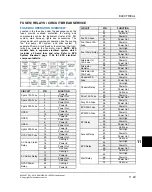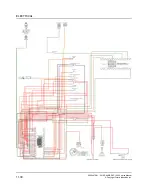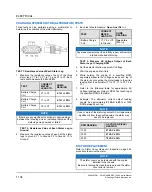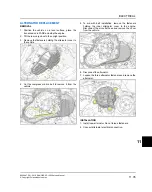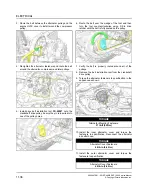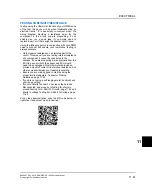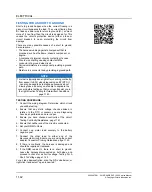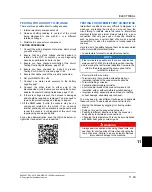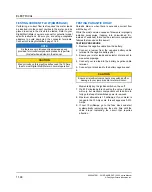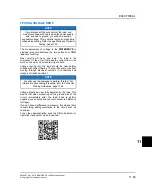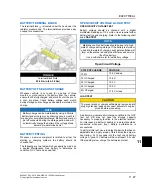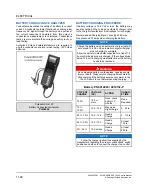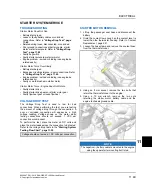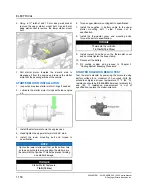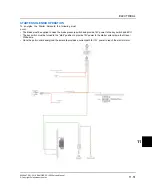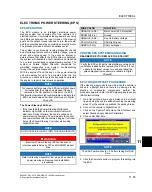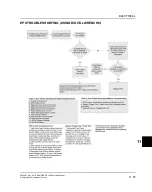
11.42
9928487 R01 - 2018 RANGER XP 1000 Service Manual
© Copyright Polaris Industries Inc.
TESTING FOR A SHORT TO GROUND
Shorts to ground happen when the current flowing in a
given circuit bypasses the load. The current flowing from
B+ finds an easier way to return to ground (B-), so much
more of it can flow than the circuit is designed for. This
causes the circuit’s protection device (either a fuse or
circuit breaker) to open, protecting the circuit from
damage.
There are many possible causes of a short to ground,
here are some:
• The harness rubbing against a component that is
grounded, such as the frame, chassis component, or
engine.
• A component’s internal circuitry contacting it’s case.
• Wire to wire chaffing causing contact with the
conductor of a ground side circuit.
• Corrosion/moisture in a component providing a ground
path.
• Moisture in a connector body providing a ground path.
NOTE
This test is typically done right after checking continuity
from sensor to ECU when diagnosing an EFI DTC. It
can also be used to help diagnose concerns about
blowing fuses. Ensure you are able to duplicate the
concern before testing so that your results point you in
the right direction.Testing for Intermittent Conditions,
TESTING PROCEDURE
1. Consult the wiring diagram. Determine which circuit
you will be testing.
2. Ensure that any static voltage checks advised in
relation to the DTC or concern you are diagnosing
have been performed and are in spec.
3. Ensure you have checked continuity of the circuit.
Testing Continuity/Resistance, page 11.41
4. Ensure that neither end of the circuit is connected.
5. Set your DMM to Ohms.
6. Connect one meter lead securely to the battery
negative post.
7. Connect the other lead to either end of the
disconnected circuit. Ensure you are using the correct
adapter.Connector Probing Guidelines, page 11.40
8. If there is continuity, the harness is damaged and
should be repaired or replaced.
9. If the DMM reads OL, there is no short to ground.
Leave the harness disconnected on both sides, and
proceed to check for a short to voltage. Testing For A
Short To Voltage, page 11.43
For a video demonstration, scan the QR code below, or
right click it and select “open in new tab”.


